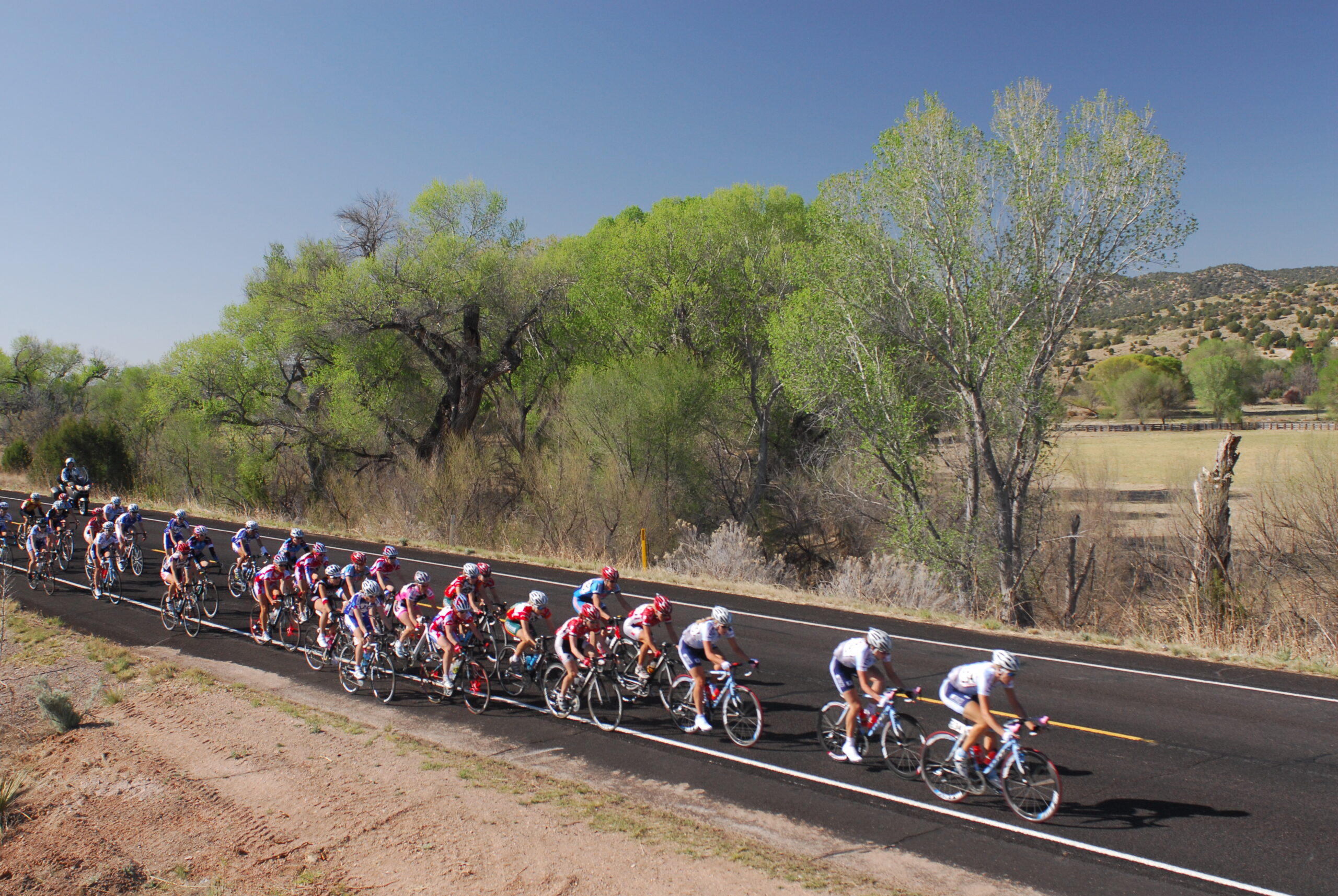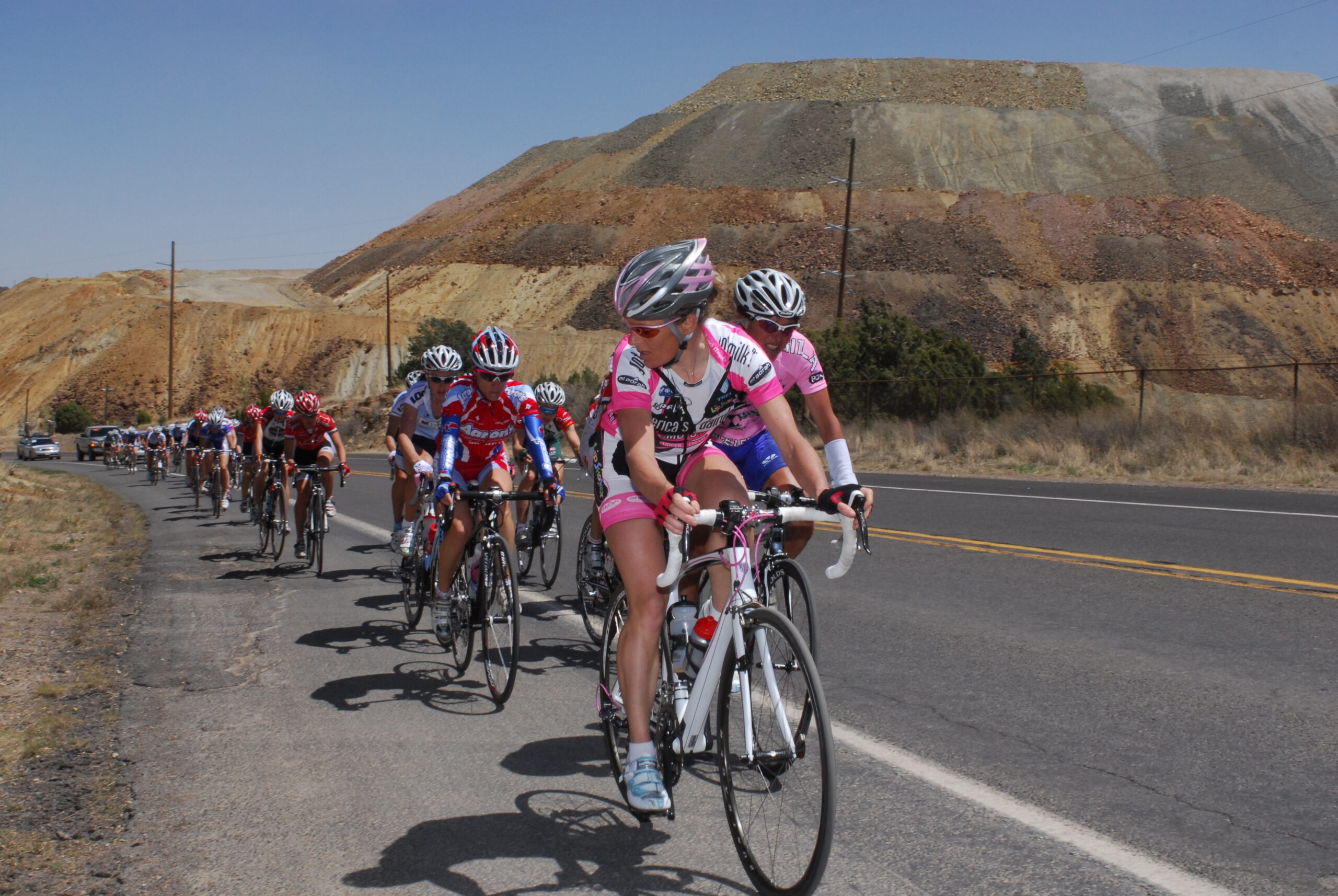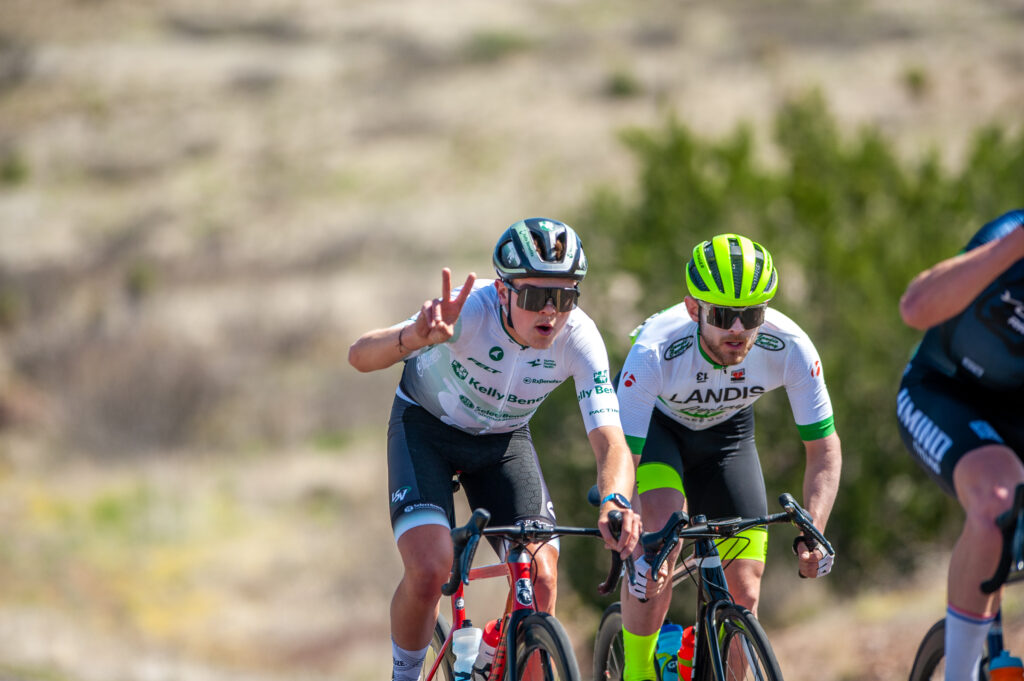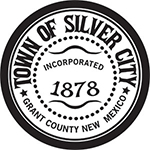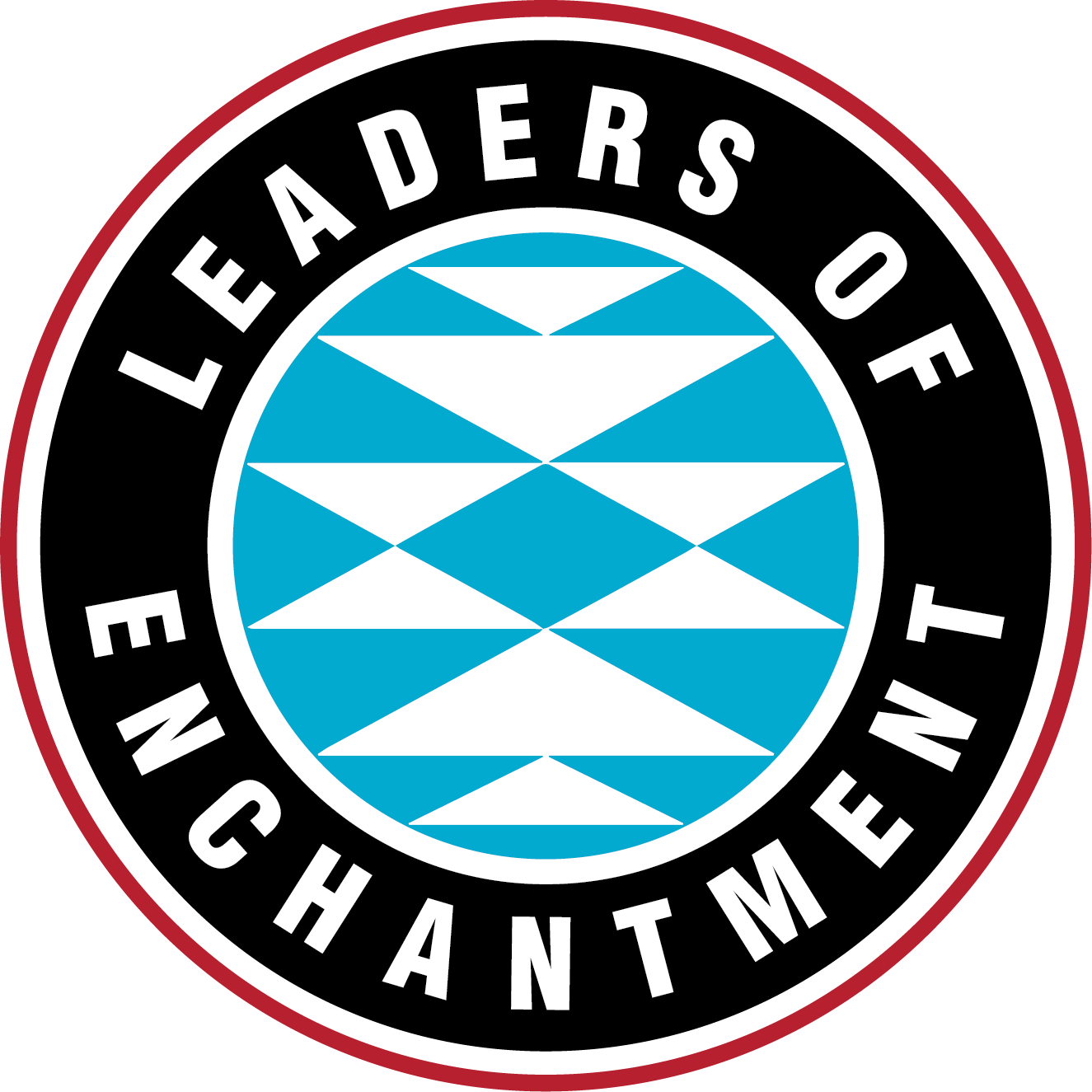Greek philosopher Heraclitus is credited for naming change as the only constant in life. And that has been true of almost everything except Tour of the Gila, which has been running the same courses with essentially the same resources and personnel for nearly three dozen years.
Back in the 1980s, residents of Silver City recognized the appeal of southwest New Mexico’s mountainous roads to cyclists, conceptualizing a five-day stage race called Tour of the Gila. With qualities similar to European road races, Tour of the Gila attracted bicyclists hailing from across not only New Mexico but the United States. Sanctioned by USA Cycling, the race became iconic for the unmatched challenge it offered amateur racers. And, as its renown grew, Tour of the Gila stepped into its rightful role as an international race sanctioned by the UCI (Union Cycliste Internationale), which is the sport’s global governing body.
“Tour of the Gila has always taken pride in offering amateur racing on the same days and same courses that all the UCI teams are racing,” says Tour of the Gila Co-Director Michael Engleman, speaking from the perspective of someone with a long history with the race. He first rode Tour of the Gila as a pro with Schwinn-IcyHot, was involved with winning the race five times as a Team Director/Team Manager, and served as the Tour of the Gila Competition Director for nine years.
Ahead of its 37th year, Tour of the Gila changed the race format and adjusted the categories offered to amateur cyclists. The board polled past participants and considered many dynamics at play, ultimately deciding to reduce the number of stages for some racers and cut the categories with very low participation. These adjustments frustrated some devout Tour of the Gila competitors.
While Tour of the Gila will not reverse this decision in 2024, the race organization has had productive conversations with athletes from many categories and wants to share its rationale, laying out a few of the factors that necessitated the change.
Limited Race Staff
Tour of the Gila is based in a town just 10,000 residents strong and travels to even smaller communities throughout our rural part of the state. The influx of racers each spring boosts the economy during race week, and the spotlight Tour of the Gila puts on New Mexico as a cycling destination boosts tourism as well. The payoff is worthwhile to the locals, who support the race with their time, talent and resources year after year. However, the race maxes out the volunteer base during the last week of April annually.
Additionally, to staff the race, medical personnel must be imported from cities that are hours away.
Small Race Fields
Seeing declining attendance in most of the amateur categories at Tour of the Gila and other road races across the U.S., the race organization was forced to review how it justifies funding and staff for the very small fields. “There may be lots of reasons beyond the control of Tour of the Gila on why there are fewer wanting to do a hard stage race, but the facts are there,” Engleman recently told one multi-time participant. In 2023, only a dozen entered the Cat 1/2 men’s race. Two of those of those competitors were Cat 1 racers, meaning they could race with the pro and elites on a team.
Industry Shift
With a strong belief in the future of the sport and a sense of responsibility for North American road bike racing, Tour of the Gila recently partnered with the Redlands Bicycle Classic and the Walmart Joe Martin Stage Race to lead talks with USA Cycling and sponsors about the value and importance of this cycling discipline when national efforts are trending toward offroad and criterium races. “The three main USA stage races, with over 100 years of combined efforts to provide road racing, are all doing our part for the sport and those that love it,” Engleman said.
Continued Economic Benefits
With few UCI teams in the Western Hemisphere these days, the majority of teams in Tour of the Gila women’s and men’s UCI races are domestic elite teams. Although most teams are getting by on very small budgets, they prioritize Tour of the Gila, bringing between two and four staff members in addition to their six to seven athletes per team to Silver City for at least a week. Many teams put all or some of their staff in hotels or vacation rentals and purchase their meals and race nutrition in the community. “Some teams arrive in town sooner or even come during other times of the year to train for this tough UCI race,” Engleman said.
In addition to the racers and staff who contribute to a Tour of the Gila-related economic boost, the required officials, neutral support mechanics and drivers, and even course personnel are also staying in paid lodging and spending money.
Building Future Champions
As one of only two UCI stage races remaining in the U.S., Tour of the Gila plays an essential role in bringing North American athletes through the ranks, giving them experience and chances to showcase their talent. “If we are going to develop a future Sepp Kuss or Chloe Dygart, we need to have road racing—and the harder the better,” says Engleman. “Tour of the Gila pulls in international teams, and that level of competition benefits the development of all the athletes involved.”


